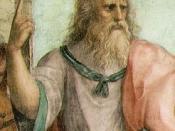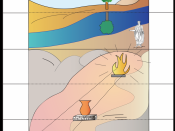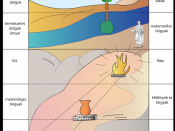Comparison of the Matrix and Plato's Allegory of the Cave
Comparison of the Matrix and Plato's Allegory of the Cave
The following essay is based on the comparison between the Allegory of the Cave written by Plato and the movie the Matrix produced by Joel Silver. Both stories, the Allegory of the Cave and the Matrix, illustrate the difference between what is fantasy and what is real. The Allegory of the Cave tells a story about a prisoner chained in a cave who believes the images projected on the wall in front are real and is the basis of his life. The Matrix is about a computer programmer, Neo, who is also a part-time hacker is dissatisfied with his existence tries to find the true meaning of his life. The Allegory of the Cave and the Matrix centers on Plato's four types of thinking: fantasy, trust / public opinion, scientific / mathematical thinking, and dialectic thinking.
Plato's first type of thinking is fantasy. In the Allegory of the Cave, Socrates describes to Glaucon prisoners who are chained to a seat and facing a wall. The prisoners have been in the cave since childhood and their heads and necks are chained in such a way that they cannot turn their head to see what is taking place behind or around them. Behind the prisoners is a low-built wall that has guards walking on a raised walkway behind the wall. Further back beyond wall and the guards is a fire. As the guards walk behind the low-built wall, the guards are holding artifacts that cast shadows onto the wall in front of the prisoners because of the artificial light being projected by the fire. Socrates explains that these shadows represent truth when he says, "To them the truth would be literally nothing...



Good comparison
i never thought tthat there would be a work similar in thinking as the Matrix. I probably will go check out Plato's Allegory of the Cave to see for myself.
4 out of 4 people found this comment useful.